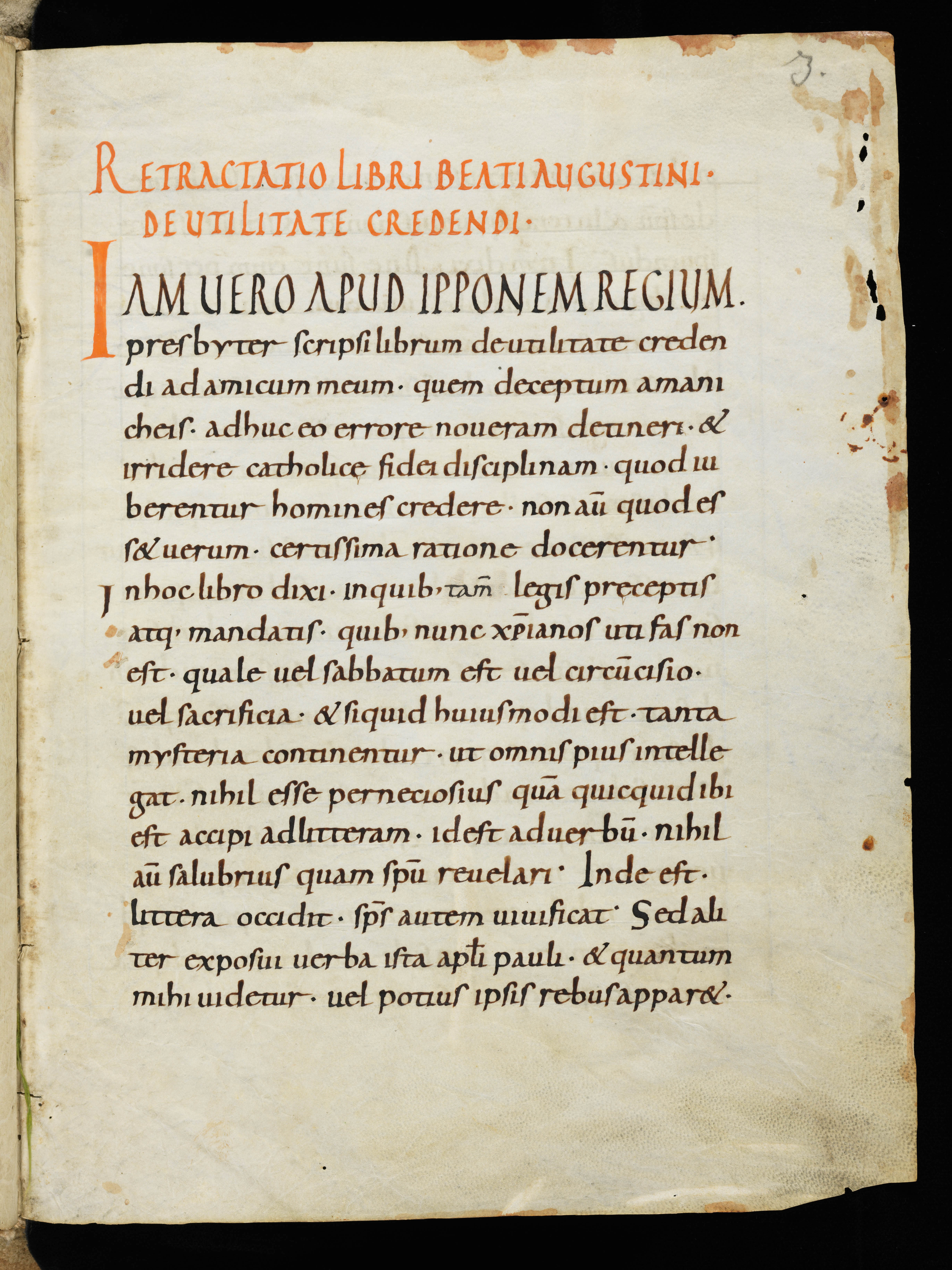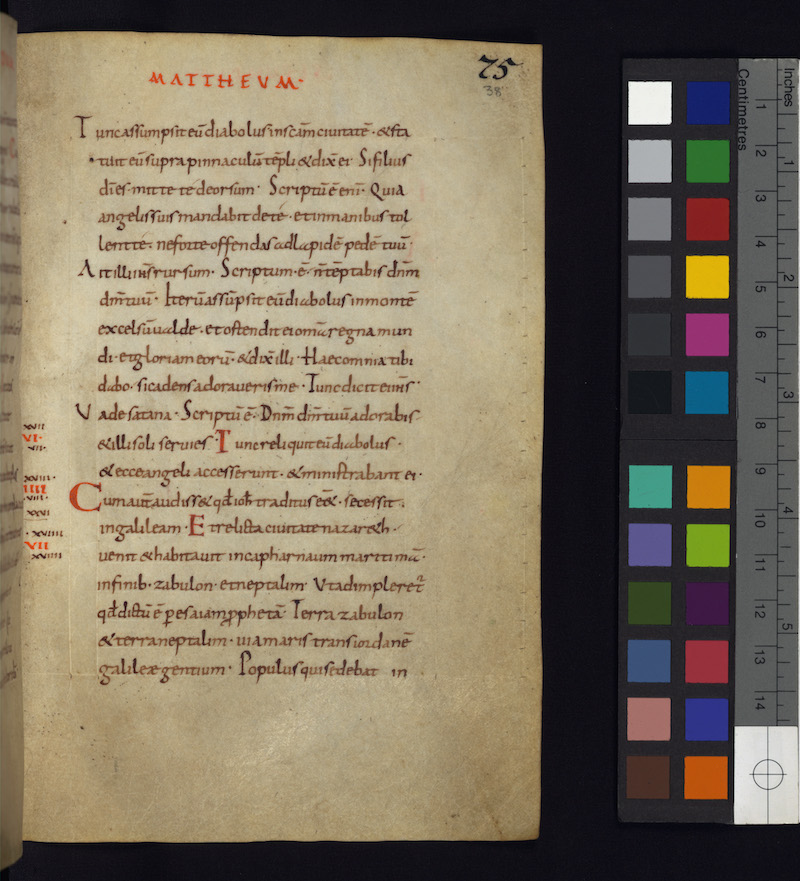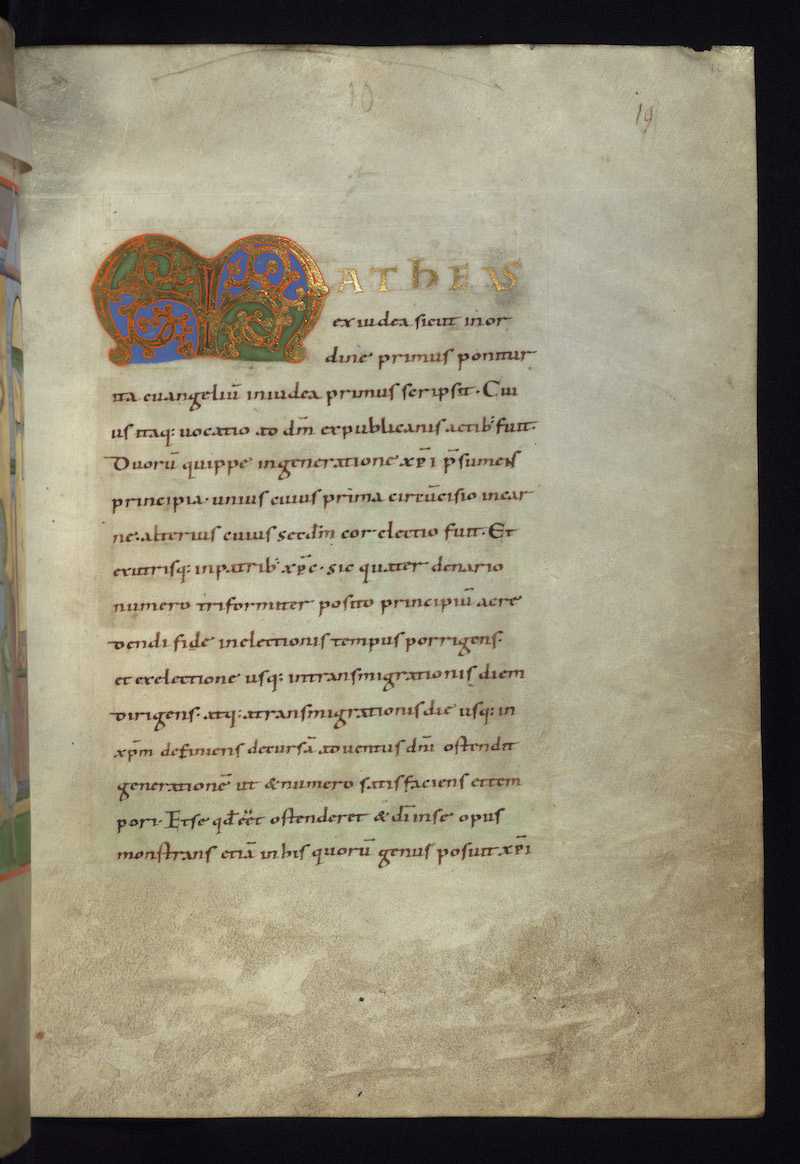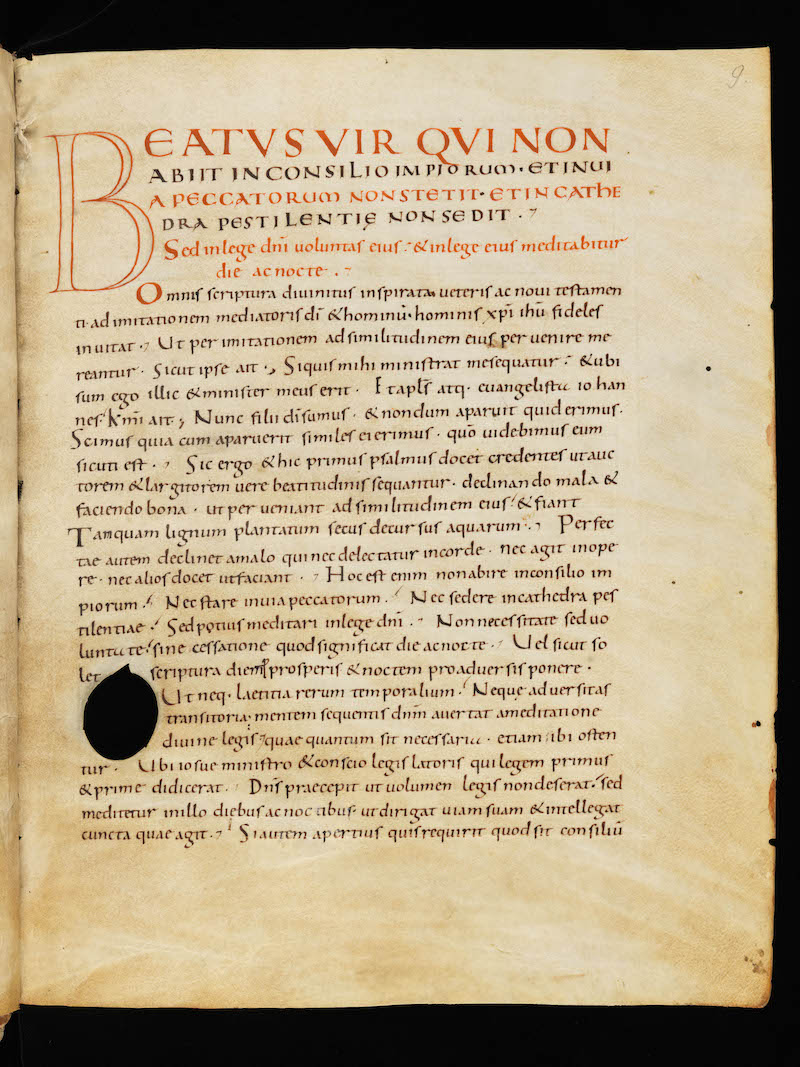
Rustic Capitals; Caroline Minuscule, 9th century
-
Title
Augustine, Retractationes, 1.14 -
Text
De utilitate credendi ad Honoratum -
Language(s)
Latin -
Writing System
Roman -
Script(s)
Rustic Capitals; Caroline Minuscule -
Country
Switzerland -
City
St. Gall -
Repository
Stiftsbibliothek -
Shelf Mark
152, page 3 -
Century
9th century -
Year Range
800-900 -
Place Of Origin
St. Gall -
External Facsimile
This 9th-century St. Gall manuscript is written in a clear, rightward-sloping Caroline minuscule, with red and black Rustic Capitals for the headings. The scribe has well-developed word-spacing and a well-developed system of punctuation: medial points demarcate clauses and elevated points plus sentence-initial litterae notabiliores mark the boundaries of sentences.
This scribe has a very distinctive way of writing m, with the middle stroke tilted farther to the right than the general lean of hand. The fact that exactly the same form appears in the correction tam(en), which is written over an erasure, suggests that the scribe himself made corrections, but not as part of his original campaign of writing.
The layout is characteristically Carolingian, with a single column of writing, initials in a left marginal space ruled to accommodate them, and margins that are larger at the right and bottom of the page than at the top and in the gutter.
Acknowledgements: Described by Carin Ruff
Transcription
1 RETRACTATIO LIBRI BEATI AUGVSTINI∙
2 DE VTILITATE CREDENDI∙
3 IAM VERO APVD IPPONEM REGIVM.
4 presbyter scripsi librum de utilitate creden(-)
5 di ad amicum meum∙ quem deceptum a mani(-)
6 cheis∙ adhuc eo errore noueram detineri∙ et
7 irridere catholicȩ fidei disciplinam∙ quod iu(-)
8 berentur homines credere∙ non au(tem) quod es(-)
9 set uerum∙ certissima ratione docerentur˙
10 In hoc libro dixi∙ in quib(us) [/tam(en)] legis prȩceptis
11 atq(ue) mandatis∙ quib(us) nunc chr(ist)ianos uti fas non
12 est∙ quale uel sabbatum est uel circu(m)cisio∙
13 uel sacrificia∙ et siquid huiusmodi est∙ tanta
14 mysteria continentur∙ ut omnis pius intelle(-)
15 gat∙ nihil esse perneciosius qua(m) quicquid ibi
16 est accipi ad litteram∙ id est ad uerbu(m)∙ nihil
17 au(tem) salubrius quam sp(irit)u reuelari˙ Inde est∙
18 littera occidit∙ sp(iritu)s autem uiuificat˙ Sed ali(-)
19 ter exposui uerba ista ap(osto)li pauli∙ et quantum
20 mihi uidetur∙ uel potius ipsis rebus apparet∙
Paleographic Features
1. The first three lines are written in Rustic Capitals, and the Caroline Minuscule starts in line 4.
2. Line 5 is full if this scribe's distinctive style of m.
3. This scribe's distinctive a appears in ratione in line 9. Compare it to the a in the correction tam(en) directly beneath in line 10 — clearly the work of the same scribe, even though the ink and pen are different.
4. The scribe uses raised points at the ends of sentences, followed by litterae notabiliores at the start of the new sentences — as for example at the end of line 9, and in the third and fourth lines from the bottom. Compare the medial points after shorter clauses passim.



